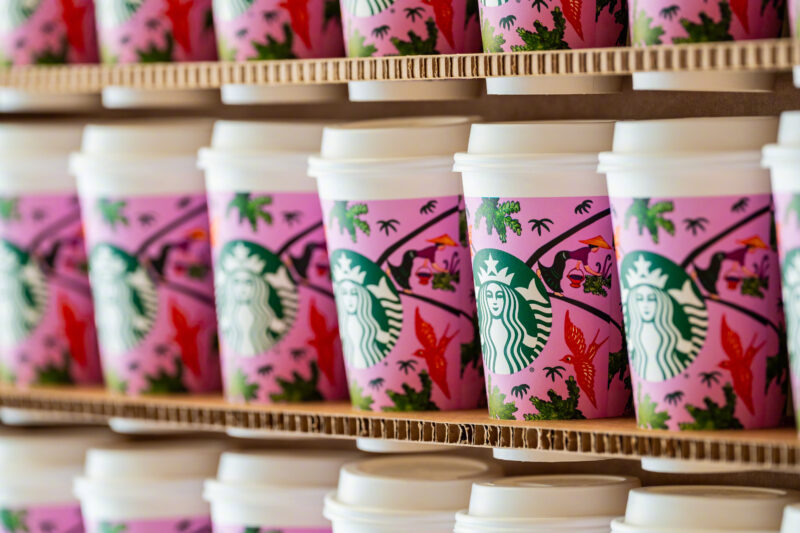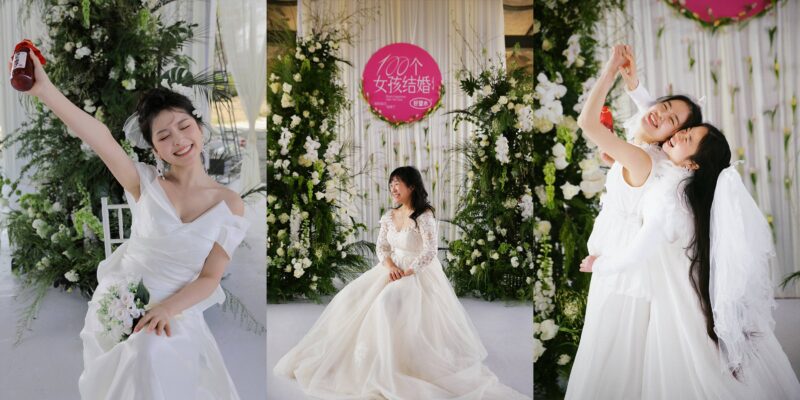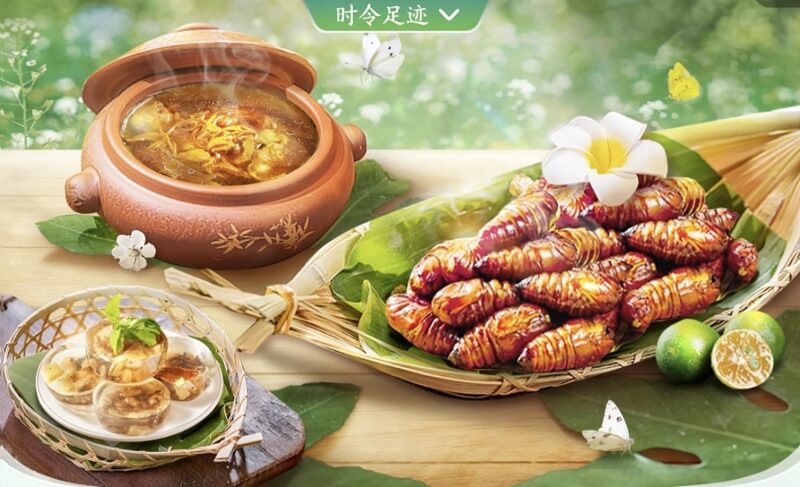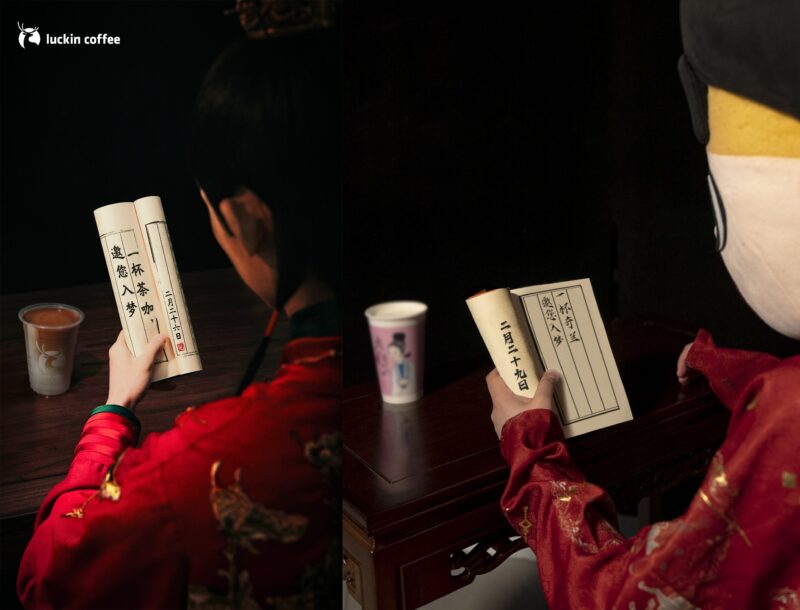Key takeaways:
- The second day of the second month on the Chinese calendar is called Longtaitou (Dragon Head-raising Day), traditionally associated with dragons and haircuts.
- Brands such as Yonghe Hair Transplant and JD.com used the dragon and haircut association to craft their seasonal campaign. Xiaomi, on the other hand leveraged the “head-raising” part by showing ordinary people with their heads held high.
- Brands need to find the fit between their image and the niche festivities, and craft creative angles in order to leverage them.
As we enter the second month of the Chinese calendar, many on social media have started to talk about the Longtaitou (龙抬头) Festival on the second day of the second month. Meaning “dragon head-raising day”, a traditional day for cutting your hair. Typically, there are many promotions at your local hairdresser either on e-commerce or “local services” apps.
But each year, there will be creative uses of the festival by brands, and many of them non-hair-related.
What is Longtaitou, anyway?
Longtaitou is the second day of the second month in the Chinese calendar. Traditionally, it is a day associated with haircuts, as superstition dictates that cutting your hair during the first month of the year will jinx your uncles, specifically brothers of your mother. In some regions, the day is also associated with certain foods, such as dragon scale pancakes (龙鳞饼).
Interestingly, Longtaitou is historically related to the solar term Jingzhe (惊蛰, insects awaken). Both days signify the awakening of life after the winter and are about growth.
For all your coiffure needs
First of all, most hair salons prefer direct discounts and other forms of promotion instead of a creative campaign, as the festival is relatively niche and too close to both CNY and International Women’s Day (IWD). But there are some interesting examples out there.
Yonghe avoids the direct association but uses a more generic “growth” and “getting rich” to universalise the appeal of the day
This year, Yonghe Hair Transplant continued its campaign “生发(fā)节”. It is a play on the character “发” which has two pronunciations, as it is a simplification of two characters “發” (pronounced fā, meaning growth and in the festive context, getting rich) and “髮” (pronounced fà, meaning hair). Yonghe avoids the direct association between hair, Longtaitou and the brand itself, but uses a more generic “growth” and “getting rich” focus to universalise the appeal of the day.
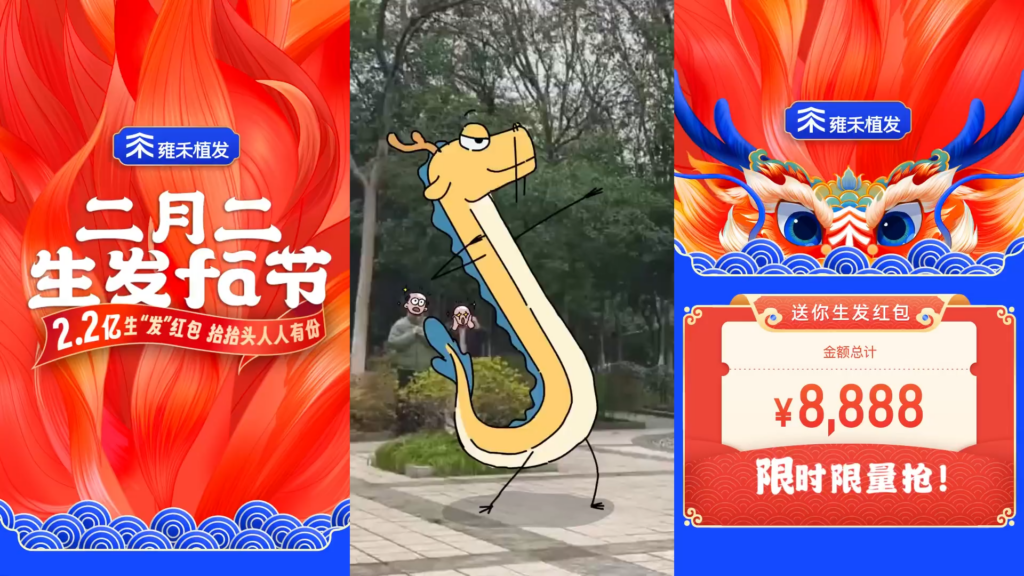
This year, the hair transplant brand teamed up with cartoon IP Daddy Loong (我的爸爸是条龙) to launch a dance challenge, as well as a call for hair-related stories. The campaign involves cash prizes worth a total of 220 million RMB (30.64 million RMB), as well as discounts worth up to 8,888 RMB (1,239 USD, notably the number 8 is often chosen for its similar pronunciation to 發).
Other ways to go
This year, JD.com launched an equally punny campaign called JD Yuantoujia Lifadian (圆头价理发店, lit. Round-head-priced Hairdresser, not to be confused with the Parliamentarians during the English Civil War). The copy plays on the fact that “圆头” (round head) and “源头” (source) are both pronounced as “yuantou” in Chinese. With a video and a series of posters, JD introduces “source” or OEM manufacturers for items.



Smartphone maker Xiaomi, on the other hand, focused on the “taitou”, or head-raising part of the festival. This avoids the fatigue of dragons as 2024 is the year of the dragon. It is a celebration of people who “埋头” (maitou, bury themselves in) life and work. Using the camera on the Xiaomi 14 Ultra smartphone, the brand showcases ordinary people pictured holding their heads high.
Xiaomi’s photography provides emotional value for heart-warming stories and is on-brand for the phone maker
While the JD campaign is creative and brings new life to the haircut trope, Xiaomi’s campaign is particularly interesting because it avoids dragons and haircuts altogether and finds a new angle on Longtaitou-themed marketing. It is comparable to Ele.me’s bug-eating challenge for Jingzhe earlier this month, which is innovative, intriguing and on-brand for a food delivery service. Xiaomi’s photography shows stories of ordinary people and showcases the quality of the camera on its smartphones. It provides emotional value for heart-warming stories and is on-brand for the phone maker.
For brands, leveraging niche holidays can be a tricky game. It might not be a time for many to spend, as CNY and IWD are both popular shopping periods. However, it is the perfect opportunity for brands to find a compromise between their image and the playful, everyday undertone of haircuts and spring growth to spread their message as these are the messages that will resonate with consumers. It will also apply to other niche festivals and celebrations on the calendar, such as Jingzhe.





